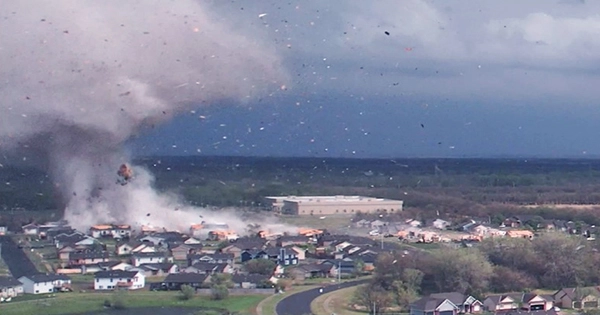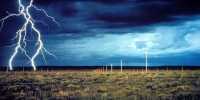A stunning video recorded by drone reveals the destructive power of an EF3 tornado as it passes across Kansas. Despite the seeming mayhem, there were no fatalities. Meteorologist Reed Timmer shared the spectacular high-definition footage on Twitter, and it has now been shared all over social media. Before departing the earth after roughly 21 minutes, the tornado damaged almost 1,000 houses in Kansas and hoisted automobiles into the air.
Timmer stated in an accompanying tweet, “Note how the tornado propagates via vortex dynamics and probable terrain.” Take a look at the amazing footage. According to early statistics, the tornado was designated an EF-3, which means winds reached between 219 and 266 kilometers per hour (136 and 165 miles per hour).
Because to the high frequency of tornadoes, Andover, the town that was hit the most, has a preponderance of wooden dwellings. In many situations, it is more practical to simply rebuild the structures than try to outmuscle Mother Nature. Even though scientists are using comprehensive satellite images and forecast models to try to anticipate when and where tornadoes may originate, twisters can still be extremely unexpected. Unfortunately, climate change is upending the rules, making tornadoes longer, stronger, sooner, and more often, as well as changing the route of damage.
Climate change is the problem that exacerbates all other issues, from the global economy to major city floods and isolated islands. However, natural catastrophes, notably storms and flooding, have received a lot of attention as a result of pouring so much carbon dioxide into the atmosphere, and research after study predicts that they will only get more powerful as the world heats. Another natural disaster, a widespread but little understood one, may be impacted by man-made climate change, according to a recent research. Tornadoes, it turns out, are moving their destructive paths throughout the United States, and there’s a good probability that this is due to humanity’s negative effects on the globe.
The presence and trajectories of tornadoes across America during the previous 60 years were studied in this study, which was published in the Journal of Applied Meteorology and Climatology. They divided them into two groups: those born between 1954 and 1983 (when temperatures were lower) and those born between 1983 and 2013. In “tornado alley,” a colloquial if not scientifically defined region that includes (at least) northern Texas, Oklahoma, Kansas, and Nebraska, there has been a decline in both total tornado days and number of individual tornadoes over time. Indeed, one broad region of Oklahoma shifted from having the highest number of yearly tornado days in the first period to having the lowest number by the conclusion of the second era.
















